A Salute to Peter Petras who lived at 26 Codington Street in Raritan
He died while fighting for our Freedom during World War II
by Bruce Doorly |
This Memorial Day we remember those who in the past made the ultimate sacrifice so that we today can live in freedom. In this issue we honor Peter Petras
of 26 Codington Street in Raritan. He was killed during World War II while a member of the 94th infantry under General Pattonís Third Army.
Today, his sister, Dorothy Petras Yashinski, still lives in the house that her Brother Peter did before he went off to war in 1942. Here is his story.
Peter Petras was born in Raritan in 1913. His family had deep roots in Raritan as his father Steve had been born in Raritan. His mom Julia was born in
what now is known as Slovakia.
While Peter was a young man in Raritan his family was well known in town for two reasons. First Peterís grandfather
(and later his Uncle Mike) owned and operated The Petras Grocery Store which was at 28 Codington Street (on the corner of La Grange Street).
The second reason the Petrasís were well known in Raritan was that the extended Petras family comprised 6 homes in Raritan. Three of which were in
a row at 24, 26, and 28 Codington Street (family lived in the back of the Grocery Store.) The others were on Somerset Street and Thompson Street.
As a youth, Peter attended St. Josephís Parochial School in Raritan. After finishing school he worked at Calco Chemical in Bridgewater as a bookkeeper.
|
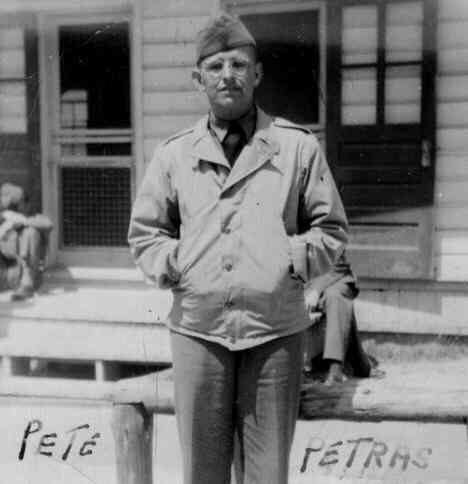 |
He was a regular in the local bowling league in Raritan. The bowling lanes back then were in the basement of St. Josephís School on Somerset Street.
He had a passion for the opera, often listening to opera records and sometimes attending the opera. Peter had a steady girlfriend who lived in Bound Brook.
When World War II broke out, he, in 1942, joined the army and said goodbye to his girlfriend.
For 2 years he trained stateside, then in August of 1944 he was shipped overseas to join the fight.
The unit he was assigned 94th infantry had seen plenty of combat as they first hit the beaches at Normandy on D-Day, June 6th, 1944.
Peter Petras would join up with them in September of 1944. He was assigned to a field artillery unit.
His job was establishing communications in the battle zone. He often laid down the telephone wire that soldiers would use at the front lines to report back to
their commanders. This was dangerous work as it would often put him at the front line. The 94th infantry serving under Pattonís Third Army spent many days
in battle as they fought across Europe toward Germany.
The exact details of Peter Petrasís death are not known. But the battle his unit fought in is well documented.
On March 20th, 1945 the day he was killed, Pattonís Third Army had just advanced to the edge of The Rhine River which was on the west coast of Germany.
The river was a key strategic point as it is a natural defensive barrier. The 94th infantry as it had moved across Europe, had seen many tough battles,
were many of their soldiers were killed, even more were injured. But their toughest battle was to come at the Rhine River.
At this point the Germans were making their last stand at the edge of the river. Masses of German soldiers along with their machinery
and ammunition were dug in for a fierce fight. In war, an attacking force is very vulnerable when crossing a well-defended river.
The 94th along with Pattonís Third Army had many soldiers killed as they fought to cross the Rhine River. Peter Petras of Raritan was one of them.
|
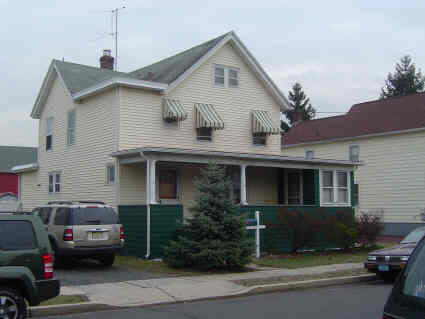 |
Back on the homefront in Raritan it would be two weeks later that the Petras family would be notified that Peter had died fighting for his country.
Peterís sister Dorothy still recalls the events of the day that her family was told of Peterís death.
It was the afternoon of Monday, April 2nd, 1945. She along with the other kids were off from school, probably for spring break.
Two military men arrived at the home and found Peterís mom Julia there alone. They asked if she had any family nearby that could come over.
She said they were next door and she went to get someone. Peterís mom at first did not fully grasp that the purpose of the military men was to
inform them of the tragic news. The usual method during World War II to notify the family that their son had perished in battle was a telegram
delivered by Western Union. Thus families feared a telegram delivery boy at their door step, not military men in uniform.
The military men proceeded to informed Julia of her sonís death.
His sister Dorothy remembers that she along with a few cousins were
reading comic books at a nearby house. They were called over by her mom and informed of Peterís death. It was tragic and also shocking as
the war in Europe was almost over. Each news report that told of the U.S. Armyís progress in finishing off the Germans had raised their
hopes that he would return home safely.
|
 |
Initially Peter Petras was buried in Luxembourg in a U.S. Military cemetery. A touching photo (shown on the right) of his grave site was taken in 1945
with his friend Fran Michaly standing in front of it. Also, some surviving World War II letters written by his friend Anthony Musz tell
of his persistent to visit Peterís gravesite in order to get a photo. (These letters can be found at www.raritan-online.com.)
A few years after the war, Peterís body was brought home to be buried at St. Bernardís Cemetery in Bridgewater.
On the day of the funeral a mass was first held at St. Josephís. Afterwards there was a military funeral with uniformed military personnel from Ft. Dix.
While Peter had now been gone a few years, his sister Dorothy recalled how incredibly sad the playing of Taps was.
Years later Dorothy Petras would name her son after Peter. The military tradition of serving oneís country would continue for
their family as Dorothyís children would serve their country. Her son Peter would serve in the army and her other son Joseph in the air force.
Also, her daughter Lorraine was a U.S. Air Force Major who retired from the military after serving 1978 - 1994.
As for the Petras Grocery Store, like many of the Mom and Pop stores of that era, it would close in the late 1950s.
The building/home that it was located in still stands today. Cousins of Peter Petras live there.
|
 |
|
Click to see large view of the above photo |
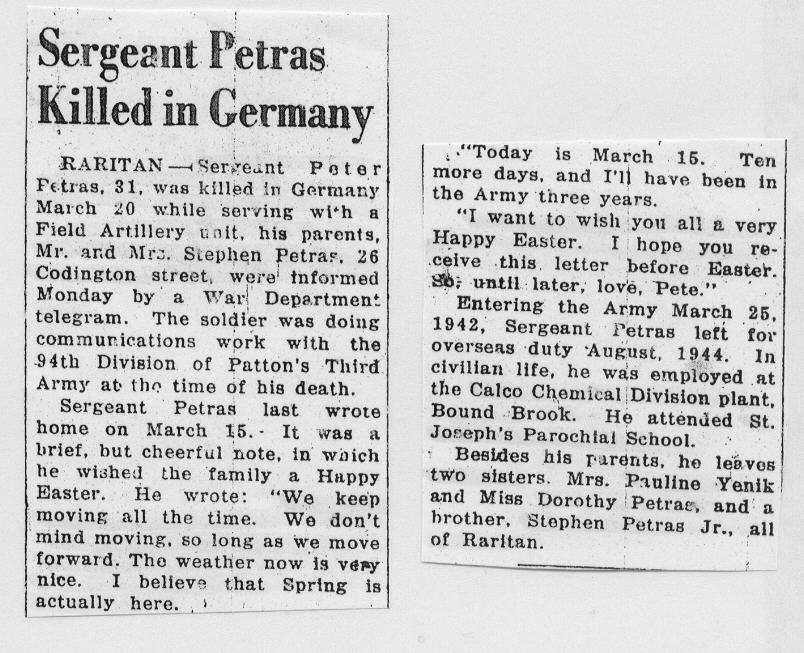 |
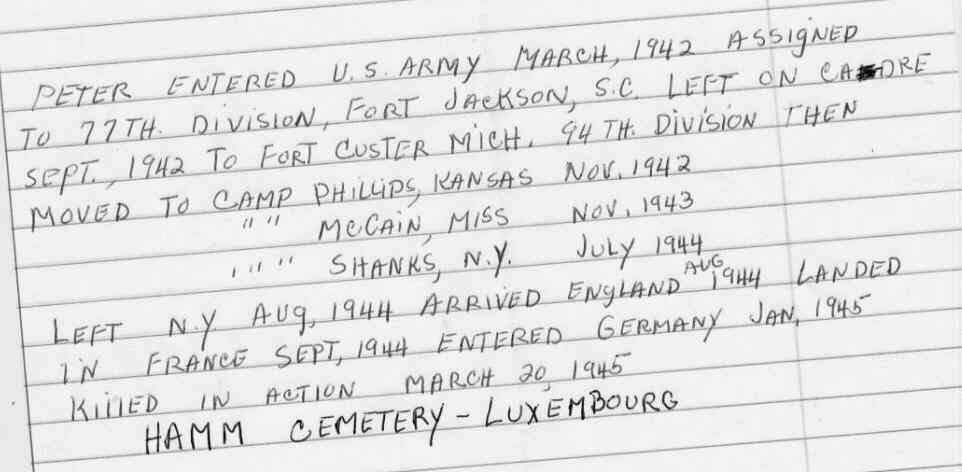 |
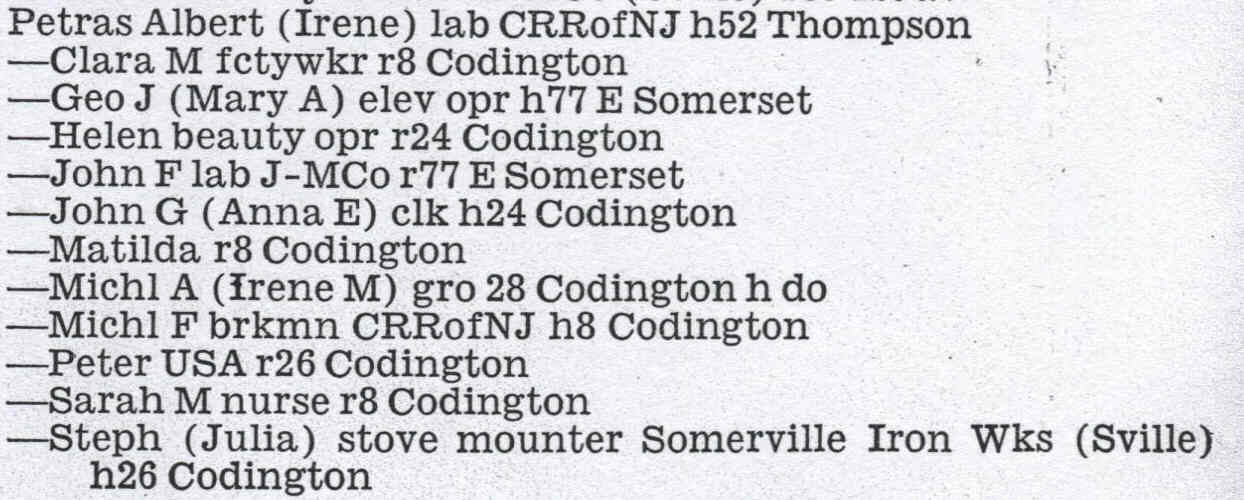 |
 |
| The above 1942 directory shows the many Petras families that then lived in Raritan |
The Raritan Valley News Printed the above
picture and poem shortly after his death |







